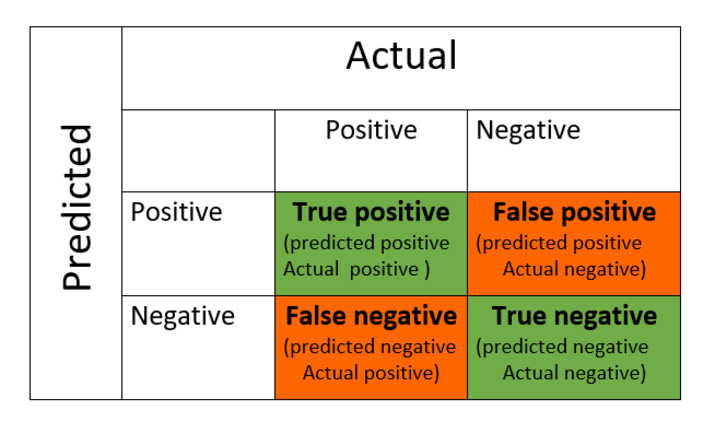
 Data Structure
Data Structure Networking
Networking RDBMS
RDBMS Operating System
Operating System Java
Java MS Excel
MS Excel iOS
iOS HTML
HTML CSS
CSS Android
Android Python
Python C Programming
C Programming C++
C++ C#
C# MongoDB
MongoDB MySQL
MySQL Javascript
Javascript PHP
PHP
- Selected Reading
- UPSC IAS Exams Notes
- Developer's Best Practices
- Questions and Answers
- Effective Resume Writing
- HR Interview Questions
- Computer Glossary
- Who is Who
False Positive vs. False Negative
Introduction
The ratio of accurate predictions to inaccurate predictions is plotted in a matrix known as a confusion matrix. This would refer to the ratio of true negatives and true positives (right predictions) to false negatives and false positives for a binary classifier (incorrect predictions). After data cleaning, preprocessing, and parsing, the first thing we do is feed the data to an efficient model, which naturally produces results in probabilities. Hold on though! But how do we assess the performance of our model?
Higher performance, better effectiveness?exactly that's what we want. And here's when the Confusion matrix comes into the picture. A process evaluation for machine learning categorization is the confusion matrix. In this article differences between false positive and false negative will be covered.
Confusion Matrix
It is a performance indicator for a classification problem using machine learning, the output of which can be two or even more classes. There are four possible predicted and actual value combinations in the table.
The terms that are associated with the confusion matrix are ?
True positive ? a situation where both the actual and predicted values are positive.
True negative ? a situation where both the actual and predicted values are negative.
False positive ? a situation where the actual value is negative and the predicted value is positive.
False negative ? a situation where the actual value is positive and the predicted value is negative.
The format of a confusion matrix is as follows ?

Let's see an example ?
Assume that, we want to figure out how well a patient's infection state can be predicted by Blood cancer tests. The Corona test here is used to distinguish between two possible states: infected and normal.
True positive ? The classifier indicates that the person is infected, and a second cancer test confirms this finding. As a result, the test was right.
False positive ? A person's preliminary test results are positive, but a subsequent PCR test reveals that the individual is truly negative, not infected.
True negative ? The classifier classifies the rapid test as negative and the person is not actually infected.
False negative ? The classifier classifies the rapid test as positive but the person is actually infected and not healthy so the test should be negative.
Difference between False positive and false negative
Below are some major differences between False positive and false negative ?
False Positive |
False Negative |
|---|---|
A condition where the actual value is negative and the predicted value is positive |
A condition where the actual value is positive and the predicted value is negative. |
Also known as "Type I error" |
Also known as "Type II error" |
A binary classification example with two classes, True and False, can allow you to understand this. False positive values are those that have been assumed to belong to the "True" class when, in fact, they do not, but rather to the "False class." |
A binary classification scenario with two classes, True and False, can allow you to understand this. False negative values are those that were assumed to belong to the "False class" when in fact they belonged to the "True class." |
This shows the frequency with which a classifier predicts desired outcomes incorrectly. |
This error shows how frequently a classifier predicts unfavorable outcomes incorrectly. |
False positive rate, which is also known as fall-out can be defined as the ratio of false positives and sum of false positives and true negatives |
The ratio of false negatives to the total of false negatives and true positives is known as the false negative rate, often referred to as the miss rate |
A non-spam email was incorrectly identified as spam email. |
A spam email was incorrectly identified as a non-spam email. |
Conclusion
In this article, we learned the differences between false positive and false negative. How we evaluate machine learning models will determine whether they be successful or unsuccessful. To fairly assess a model's performance, a thorough model analysis is necessary.
We have looked at how we can check whether the machine learning classifier or the model has predicted the values correctly or not and how accurate the model is using a confusion matrix. So the confusion matrix helps in the evaluation of the classifier. It contains four fields that are truly positive, true negative, false positive, and false negative.

